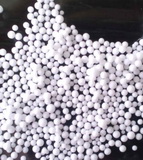Expandable polystyrene (EPS) is a thermoplastic product which is used primarily in construction and packaging applications thanks to its versatility and excellent thermal insulation, moisture resistance, weight, cushioning and impact resistance properties.
The market for EPS is characterized by high degree of manufacturing fragmentation, both in company numbers (there are more than 100 EPS producers) and company sizes. EPS-producing companies range from undisputable market leaders (such as Loyal Group, Wuxi Xingda Group, BASF and INEOS) through ‘middleweights’ (NOVA Chemicals Inc., Synthos S.A. and Taita Chemical Co Ltd. can be viewed as regional ‘heavyweights) to multiple ‘lightweights’ with sub-50K mt/y outputs. In the coming years such level of fragmentation will definitely lead to market optimization, expressed in different consolidation events and rise in M&A activity.
The expandable polystyrene market has to deal with some significant intraregional supply-demand imbalances (in many areas of the globe) or interregional imbalances. The latter type of imbalances is explicit due to the striking predominance of the APAC region in EPS production, consumption and exports over struggling North America and faring slightly better, but still stagnant Europe.
Manufacturers on the global scale largely underperform, as global capacity utilization rates stand as low as 60%. Construction and packaging are two major end-use segment markets for expandable polystyrene (the construction industry is a stronger EPS market driver as compared to packaging). Consequently, the EPS market becomes largely susceptible to the situation in these two segments, which are strong industries but prone to closely follow macroeconomic conditions.
However, the current state of the EPS market is very far from pessimistic. Just on the opposite, the global EPS market is vibrant, dynamic, resilient and full of optimism. Firstly, despite being regulation-sensitive as all chemical products, EPS nevertheless manages well with respect to different restrictive policies and sustainability standards, having advantages over moulded pulp and meeting sustainable packaging criteria. Secondly, EPS market is constantly supported by the demand from many industries, apart from building and packaging, like, for example, the pharmaceutical industry. The threat from substitutes, primarily polypropylene and polyethylene, exists but does not pose serious risks. Taking into consideration its intrinsic versatility and applicability, the EPS market will have rather bright prospects. It is possible to ascertain that the EPS success is predetermined by the very nature of this material as it shows excellent performance in various applications.
More information on the EPS market performance can be found in the insightful research study “Expandable Polystyrene (EPS): 2015 World Market Outlook and Forecast up to 2019”.
